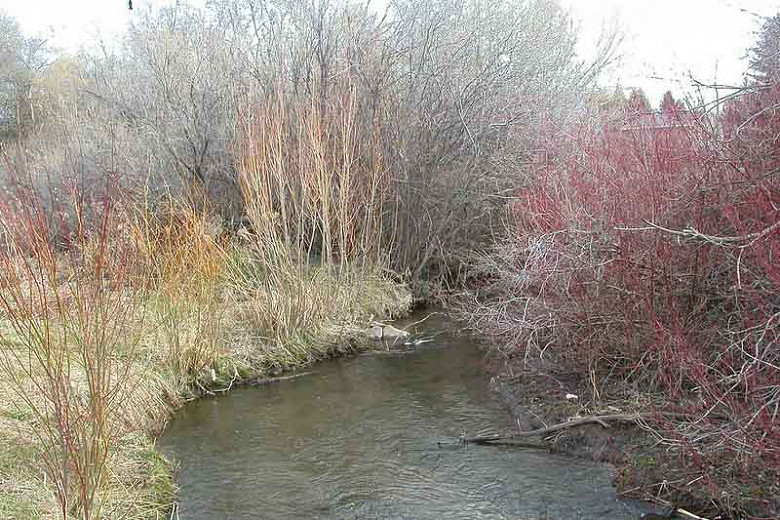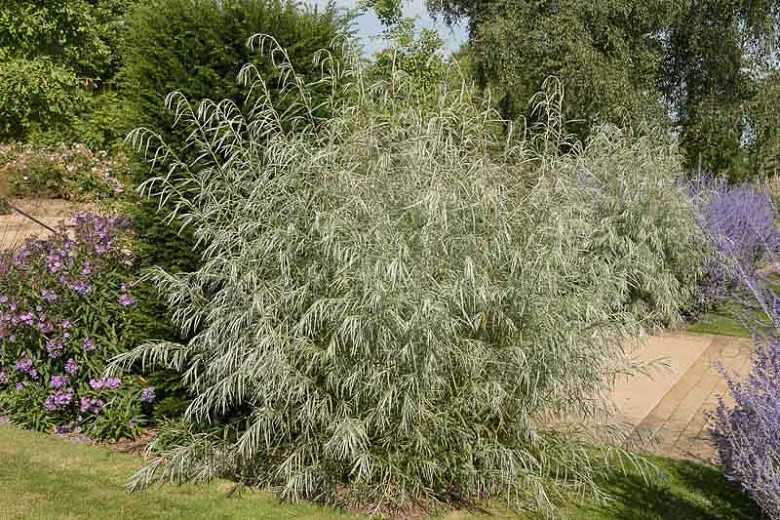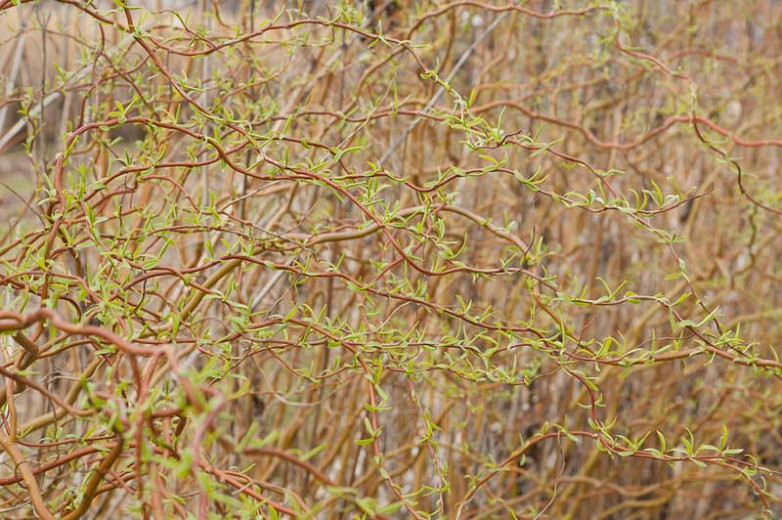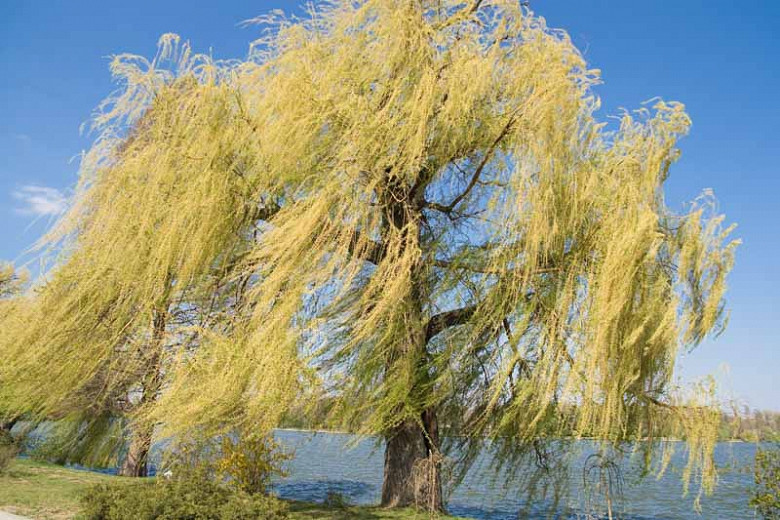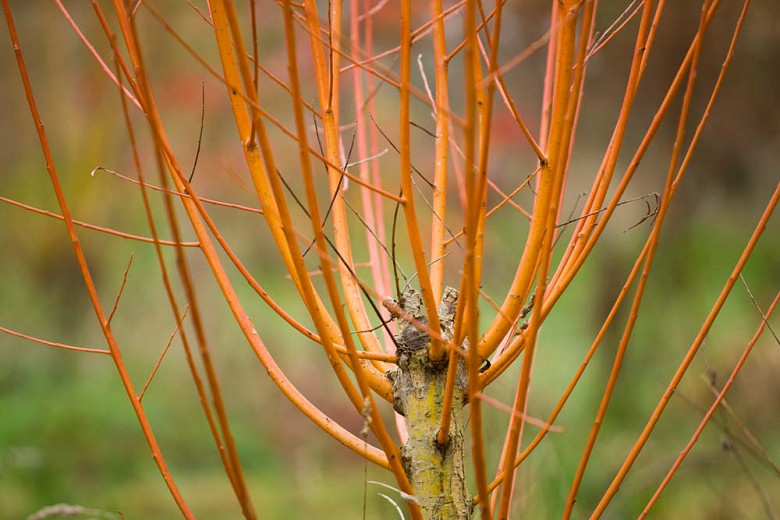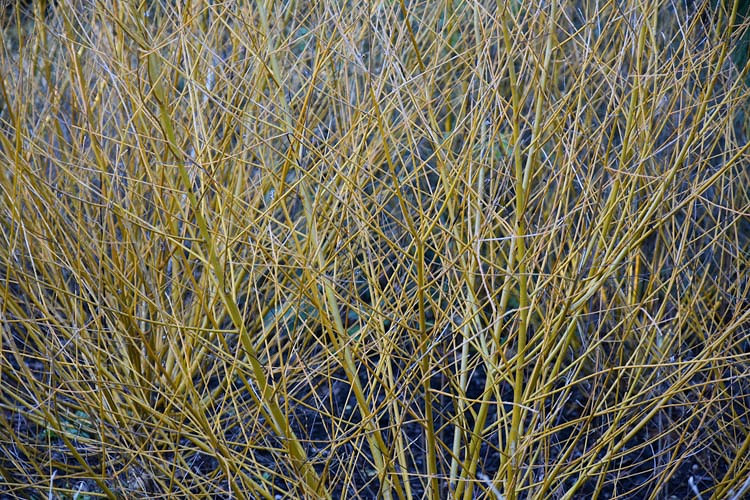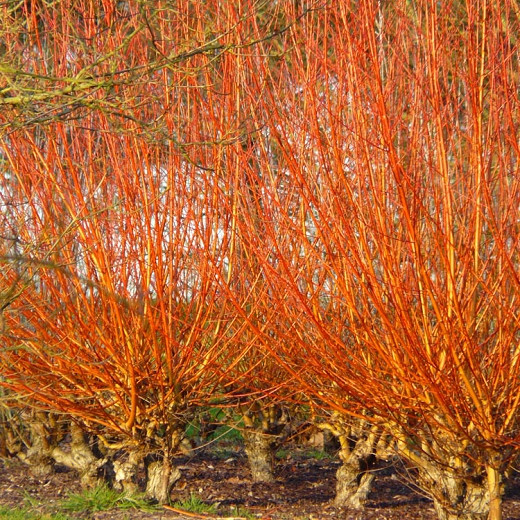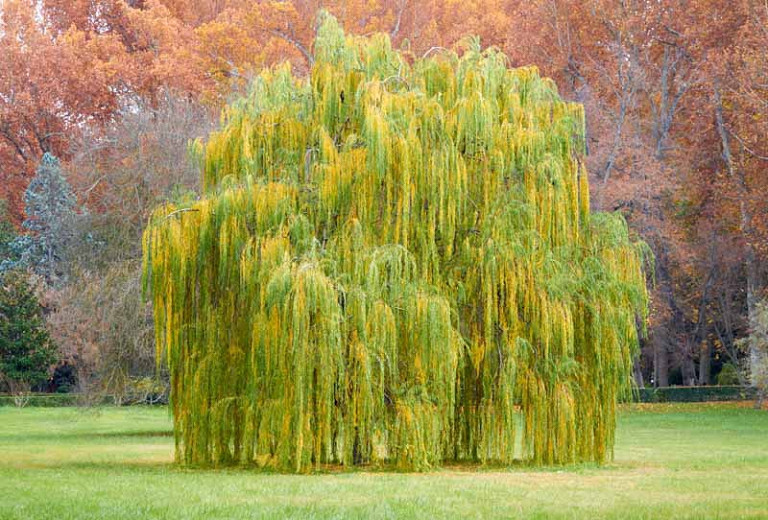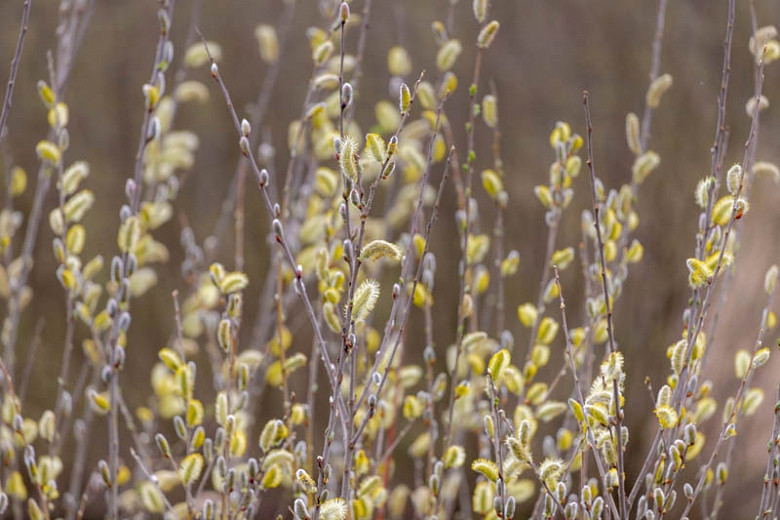Salix exigua (Coyote Willow)
Very frost tolerant, Salix exigua (Coyote Willow) is a suckering, deciduous shrub forming a thicket of slender gray-green branches bearing linear, finely toothed, silky, silvery leaves when young, later gray-green. Coyote Willow is dioecious with separate male and female plants. In spring, pale lemon catkins, 3-4 in. long (8-10 cm) are produced with or just after the leaves emerge. They are followed by clusters of capsules, containing numerous small seeds that are dispersed primarily via wind and water. Coyote Willow spreads by seed and by root sprouts. A most useful willow for sunny sites and moist soils, Coyote Willow is excellent for stream stabilization as the plant suckers profusely and forms an extensive root system. It is also suitable for planting on stream bottoms to prevent surface erosion. Grown for its beautiful show of fluttering gray-green leaves, it is perfect for bog gardens or along ponds and streams. Native Americans used the flexible willow stems for baskets, arrow shafts, scoops, and fish traps.
- Recipient of the prestigious Award of Garden Merit of the Royal Horticultural Society.
- Grows up to 15-20 ft. tall and wide (4-6 m).
- Performs best in full sun or light shade in moist, well-drained soils. Dislikes shallow chalk soils but grows well on sandy soils. Coyote Willow is both drought resistant and very tolerant of flooding.
- Keep an eye out for aphids, caterpillars, willow leaf beetles, willow bean gall sawflies, willow anthracnose diseases, honey fungus, willow scab and a rust.
- No routine pruning necessary. Remove diseased, damaged, congested or crossing shoots.
- Propagate by softwood or semi-ripe cuttings from spring to summer or hardwood cuttings from autumn to late winter.
- Native to most of North America except for the southeast and far north, occurring from Alaska east to New Brunswick, and south to northern Mexico.
Requirements
| Hardiness | 4 – 6 |
|---|---|
| Heat Zones | 1 – 6 |
| Climate Zones | 1, 1A, 1B, 2, 2A, 2B, 3, 3A, 3B, 4, 5, 6, 7, 8, 9, 10, 11, 12, 13, 14, 15, 16, 17, 18, 19, 20, 21, 22, 23, 24 |
| Plant Type | Shrubs |
| Plant Family | Salix – Willows |
| Exposure | Full Sun |
| Season of Interest | Spring (Early,Mid,Late)Summer (Early,Mid,Late)FallWinter |
| Height | 15' – 20' (4.5m – 6m) |
| Spread | 15' – 20' (4.5m – 6m) |
| Water Needs | Average, High |
| Maintenance | Average |
| Soil Type | Clay, Loam, Sand |
| Soil pH | Acid, Alkaline, Neutral |
| Soil Drainage | Moist but Well-Drained, Well-Drained |
| Characteristics | Plant of Merit, Showy |
| Native Plants | United States, California, Midwest, Nebraska, Pacific Northwest, Idaho, Oregon, Washington, Rocky Mountains, Colorado, Montana, Utah, Wyoming, Southwest, Nevada, Arizona, New Mexico, Texas |
| Attracts | Birds, Butterflies |
| Garden Uses | Banks and Slopes, Beds and Borders, Hedges and Screens |
| Garden Styles | Coastal Garden, Informal and Cottage |


